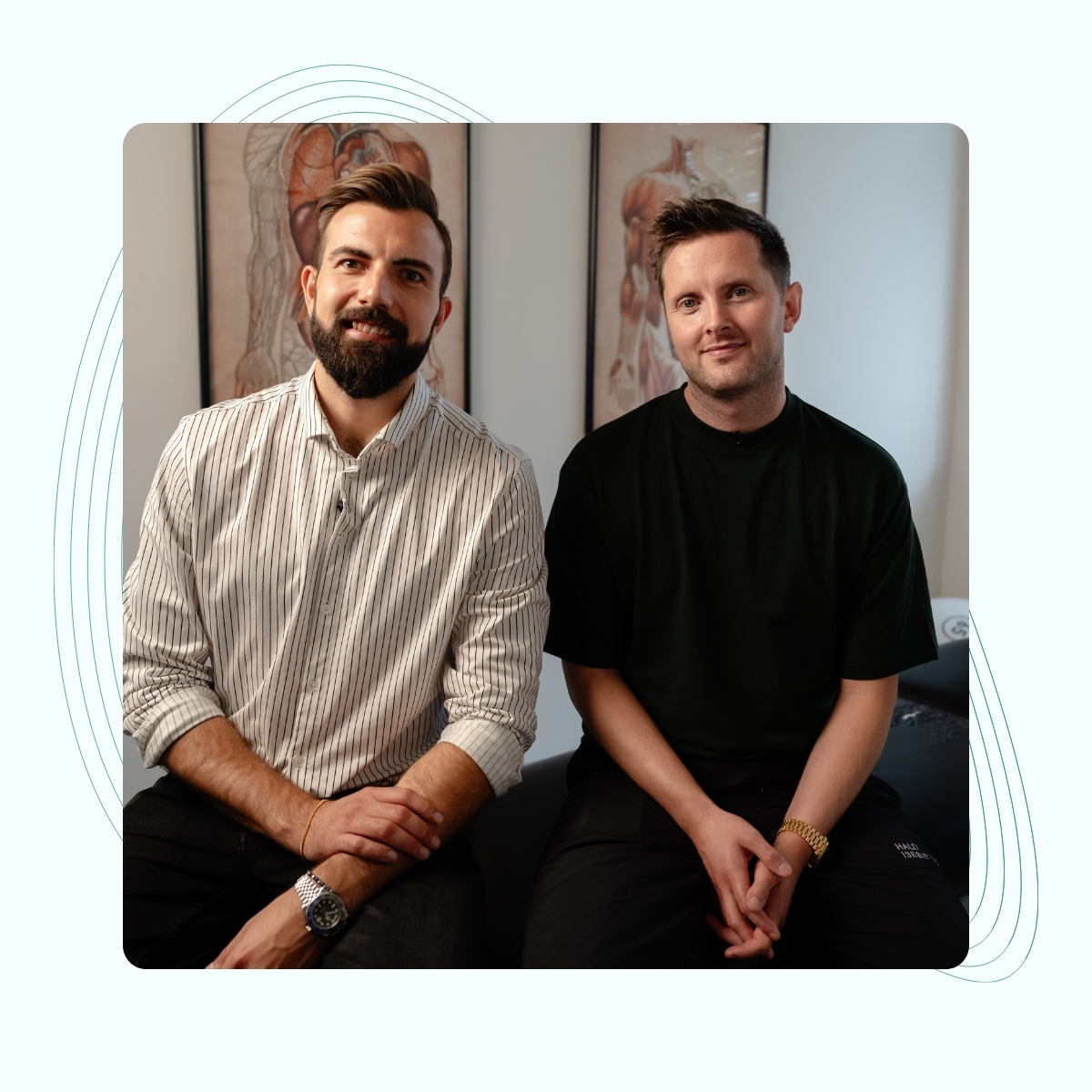We treat
Tennis elbow
Learn more about tennis elbow & its complications
What is tennis elbow?
The definition of “Tennis elbow” (also called “lateral epicondylitis”) is pain manifesting on the outer part of the elbow bone. The pain is typically experienced very specifically and locally in the area around the bone, and in most cases has either one or more of the typical symptoms of inflammation which are heat, redness, swelling, pain and reduced function.
Jump to section [Vis]
Causes of tennis elbow
The actual cause of the pain is irritation of the tendon attachment on the elbow bone from the wrist and forearm muscles, and specifically the wrist and forearm muscles that lift the hand “backwards”.
The diagnosis is made based on the symptom picture, history and specific muscle tests that can trigger known pain in the region.
The specific tests are performed to differentiate between which tendon attachments may have local inflammation.

Anatomy, incidence and differential diagnoses
All movements of the forearm and wrist use muscle groups that attach to either the outside or inside of the elbow joint. As mentioned above, it is the outer part of the elbow bone that is affected.
In the vast majority of cases, approximately 90%, the extensor carpi radialis brevis muscle is particularly affected. This muscle performs, for example, lifting the hand from the table and can move the hand and wrist in the “handshake position”.
Typically, it is the sustained tensile strain that can lead to inflammation of the tendon attachment, but there is also a degeneration (degradation) of the hyaline cartilage that can slowly cause a lower and lower level use of the arm. Therefore, it is also called tendinopathy (overuse of tendon tissue).
“Tennis elbow” is the most common cause of elbow pain in general practice.
The problem affects approximately 1-2% of the adult population, most frequently in the age group 35-50 years, and is largely determined by our mechanical environment and possibly continuous, uniform movement patterns, but it must also be seen in connection with our general lifestyle (exercise, sleep, stress, diet) and health.
Rehabilitation & tennis elbow
In order for rehabilitation and recovery of function of the elbow to be successful, it is important that other possible causes of the symptoms can be ruled out.
Here it is especially important to rule out neurological problems related to the lower part of the neck (C5-C8 radiculopathy), as this part is responsible for the nerve supply of bone, skin and muscle tissue in the elbow region. This means that there may be a pinching of nerves in the neck that causes referred pain to the elbow region.
Peripheral pinching of the nerves to the area can also be seen, i.e. a pinching that does not occur in the neck itself, but instead occurs along the course of the nerve. It can be, for example, in the chest or shoulder region that there may be a pinching of the nerve.
In both of the above cases, it is important to treat and work with the cause of the symptoms and not just deal with the symptom area.

Symptoms of tennis elbow
“Tennis elbow” is an overuse injury, and therefore there is rarely a specific trauma or direct moment when the problem starts. Symptoms can be of different nature, but murmuring symptoms or pain along the outside of the elbow are seen as the most typical.
Due to the muscles running from the elbow to the wrist, radiation down towards the wrist can also be experienced. Typically, the symptoms are triggered by stress pain, i.e. by activating the muscle group, for example by lifting a coffee pot, which is why some people can also experience, in the worst case, that they can drop things. However, some can experience such great problems that night-time pain and symptoms can also occur.
Many people avoid it for too long
Generally, for elbow problems, it is seen that many people have moderate discomfort for a long time before seeking help for advice and treatment, because they do not become symptom-free on their own. Therefore, many also experience that they can get chronic tennis elbow.
It is important to state that chronic does not mean that the problem cannot go away, but it is an expression of long-term pain and symptoms that have lasted for more than 3-6 months.
This causes, above all, increased sensitivity of the nerves in the local area, and therefore chronic tennis elbow is a more complex problem, as rehabilitation of nerve tissue has different healing times than tendon tissue.
Tennis elbow prognosis
The prognosis for tennis elbow is good, but a better prognosis is seen with a quick start of treatment after the onset of symptoms. The healing time for tendon tissue is 6-9 months. This does not mean that the duration of the acute pain should be expected to be 6-9 months, but is the period of time that should be expected before the tendon tissue is completely healed again.
How long it ends up taking also depends on how you rehabilitate your elbow, predisposing factors in everyday life and lifestyle.
Tennis elbow or golfer’s elbow?
Many people may have difficulty understanding the difference between tennis elbow and golfer’s elbow, mainly because the characteristics of symptoms and predisposing factors for both can be very similar.
Overall, the primary difference is that tennis elbow has symptoms on the outside and golfer’s elbow has symptoms on the inside of the elbow.
And whereas tennis elbow could be provoked by activating the muscles that lift the hand backwards, symptoms of golfer’s elbow are instead provoked when the wrist flexor muscles are activated.
More importantly, however, it is important to emphasize that golfer’s elbow is far less common and typically less bothersome than tennis elbow.
Difference between tennis elbow and mouse elbow
“Mouse elbow” should be thought of more as a concept than a specific diagnosis. The term covers many different conditions that can occur in the shoulder, arm, wrist and hand. The term is primarily used because there is often a close relationship between symptoms and working at a computer screen and mouse.
When people experience “mouse elbow”, the most important step is to determine more specifically what type of problem it is, treat it, and think preventively through ergonomic advice and guidance.

Treatment with blockade (adrenal corticosteroid)
A blockade is an injection of adrenal corticosteroid, which is an anti-inflammatory drug.
Blockades are typically given in connection with overuse injuries and have a pain-reducing effect for up to 6 weeks.
It is important to point out, however, that the blockade does not have a curative effect, but should be seen as a potential aid to enable rehabilitation and treatment to begin more quickly. Otherwise, the cause of symptoms and pain will still be present, and therefore the same symptom picture as before the blockade will occur when the effect of the blockade wears off.
What are the causes of tennis elbow?
The most well-documented cause of tennis elbow is unilateral and repetitive strain on the forearm and wrist, which causes irritation of the tendon tissue at the elbow.
This could be, for example, office work where work at the keyboard or mouse is not interrupted frequently enough. The task itself, typing on a keyboard, is not in itself a great strain, but if the volume is too high, an overload can occur. Therefore, tennis elbow is also a well-known work injury and a cause of sick leave among many of the professions where repetitive movements and strains are part of the working environment.
These are, overall, local, mechanical causes. But there may also be more global mechanical causes that can make you more prone to getting tennis elbow.
This can be a typical late-stage problem after a fall. In the event of a fall trauma, local dislocation of the elbow joint can occur and then cause problems with freedom of movement in the joint, and give the muscles around the elbow joint different paths of movement to which it must be able to adapt.
The same problem of reduced mobility can occur from the neck, shoulder and hand if one has experienced trauma to one of these regions. Here it is important to look again at the relationship these regions have to the elbow in terms of whether it may be mechanical, neurological or vascular.

Osteopathic treatment of tennis elbow
When you are treated by an osteopath at Aarhus Osteopathy, your problem will be viewed from the perspective of the body’s different systems and how they each interact and influence each other. When you receive osteopathic treatment, the starting point is to create optimal conditions for your body to heal and recover as best as possible, so that you will once again experience that you can perform as you want to in your everyday life.
The sections below are explanations of possible causal relationships between the mechanical, neurological, vascular and physiological systems, and their relationship to the elbow joint and its optimal function.
Mechanical causes of tennis elbow
The pain in the elbow itself can originate from the hand, shoulder and chest, as the connective tissue and muscles related to the elbow usually originate there. Malpositions and/or reduced mobility in these areas are often the cause of elbow pain.
Neurological causes of tennis elbow
The nerves that supply all structures in the elbow come from the neck and back. Therefore, neck pain and back pain can be the cause of dysfunction in the nervous system in the elbow.
Vascular causes of tennis elbow
An optimal blood supply to and from the injured area is essential for the body to heal the problem. Therefore, all areas that influence the blood supply, i.e. the chest, back, shoulder, upper arm, etc. are very important to examine.
Physiological causes of tennis elbow
Certain conditions in the body, such as improper acidity and too much glucose (too much sugar intake), can make it easier for inflammation to occur. Here, diet and the organ system are the cause of chronic (persistent) elbow pain.
In addition, your osteopath will focus on “your base” and how strong it is. This means you and your body’s overall health and potential for optimal healing.
Here, for example, there will be a focus on your diet, sleep habits and stress.
This is to clarify where your body is spending its resources and energy instead of allowing tissue healing.
This is also an important part of the treatment, as it is important that you/the patient understand their problem and what effect lifestyle etc. has on the performance and healing ability of our mechanical systems.

Tennis elbow rehabilitation
When you consult a physiotherapist at Aarhus Osteopathy, he or she will be able to help you get through your rehabilitation process with regard to training for tennis elbow and the organization of this.
It is important to be able to rebuild the strength of the tendon tissue around the elbow (collagen tissue), but precisely because there are several types of different tissue, there are also several different tissue healing and response times to think about. For example, muscle tissue responds much faster to training than tendon tissue, and therefore, as in the case of tennis elbow, it is necessary to plan the training intensity according to the response time of the slowest-reacting tissue.
In addition, your physiotherapist (physiotherapist specializing in tennis elbow) will be able to help you understand why you need to train in different ways at different stages of your rehabilitation.
The rehabilitation will include both strength training, but also stability and endurance training, and it is important that you gain a good basic understanding of this so that you can work independently with your problem and achieve the best possible long-term effect.
Exercises – Tennis elbow rehabilitation
What you can do yourself is to do home exercises for your elbow. In the past, stretching and extension exercises were the primary focus of exercises performed at home, but recent years of research have shown that strength training is the best form of exercise for tendon tissue rehabilitation.
When we do strength training, it increases the blood and lymph circulation of the tissue, which results in cleansing and healing of the tissue. Previously, people thought mainly of eccentric training, i.e. the part of the movement where the muscle is lengthened and you have to hold it back. This is still a good way to train, but recent research also shows that it is the total Time Under Tension that is important, i.e. you have to hold it back both when the muscle is lengthened and shortened.
This increases the intensity of the exercise training considerably, and therefore this should not be trained daily, but instead 3x weekly so that the body can recover and heal properly. Your therapist at Aarhus Osteopathy will be able to help you organize this part so that you train your elbow problem at the right level, so that it can gradually be exposed to stress and therefore start to get better and better again.

Tennis elbow and other help
There are many possible tools to reduce symptoms of tennis elbow. For example, armbands, kinesiotape, support bandages and bandages.
What they have in common, however, is that it should be seen as a tool and aid in the process towards finding a long-term solution.
The aforementioned aids all have in common that they can ease the mechanical pull on the tendon tissue around the elbow and therefore reduce symptoms, but conversely, they do not make the tendon tissue stronger or increase endurance.
Therefore, the problem will be the same or will recur quickly when you stop using these aids, but as mentioned, it can be a tool in the process, e.g. in very painful cases, to get started using the elbow again. Your osteopath or physiotherapist will be able to guide you on this.
Anti-inflammatory medication & tennis elbow
Many people also use Voltaren or Ibuprofen (NSAIDs) to relieve pain. The problem with this in relation to tennis elbow is that the aforementioned are anti-inflammatory.
Inflammation is important for the body’s healing ability, as it has both a destructive and constructive phase, both of which are equally important for complete healing and restoration of function.
However, if you use anti-inflammatory medications early in the process, or over a long period of time, you lower the body’s healing ability because inflammation is not allowed to completely clean up the area and subsequently facilitate tissue reconstruction. This is of course set against how severe the pain and symptoms are experienced.
Here too, it may be a good idea to get advice and guidance from your osteopath or physiotherapist, in order to keep the pain level as low as possible, but also to have the optimal amount of inflammation in the body for both breakdown and rebuilding of the body and its systems.

Prevention and good advice against tennis elbow
There are many things you can do and consider to avoid a tennis elbow problem.
As mentioned earlier, there are many possible causes and elements surrounding tennis elbow, but the most obvious is to make sure to vary the use of the arm/elbow so that it is not too monotonous all the time.
In addition, it is again important that you focus on the foundation.
That is, for example, your diet in terms of whether you get enough proteins, fats, carbohydrates and vegetables in your daily life, which is important for a strong immune system that can help the body with optimal healing.
However, in relation to overuse injuries, it is especially important to focus on sleep, as several studies show that a lack of sleep significantly weakens the body’s immune system and increases the risk of injury.
So to avoid tennis elbow, it is just as important to focus on your general health as it is to train your elbow. Because focused training will not have an optimal effect if the foundation is not solid.

Often related injuries

Side stitch

Padel injuries
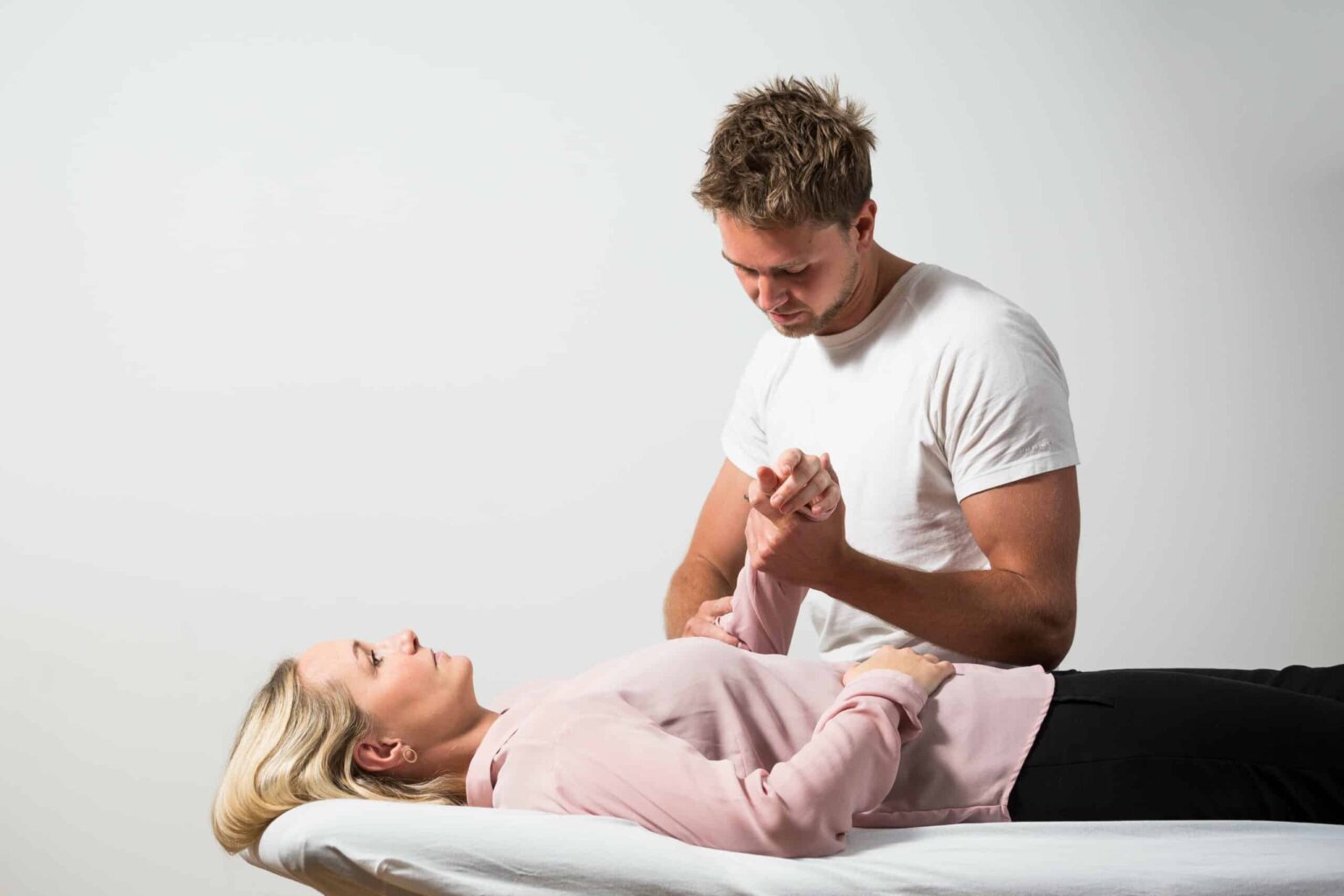
Trigger finger
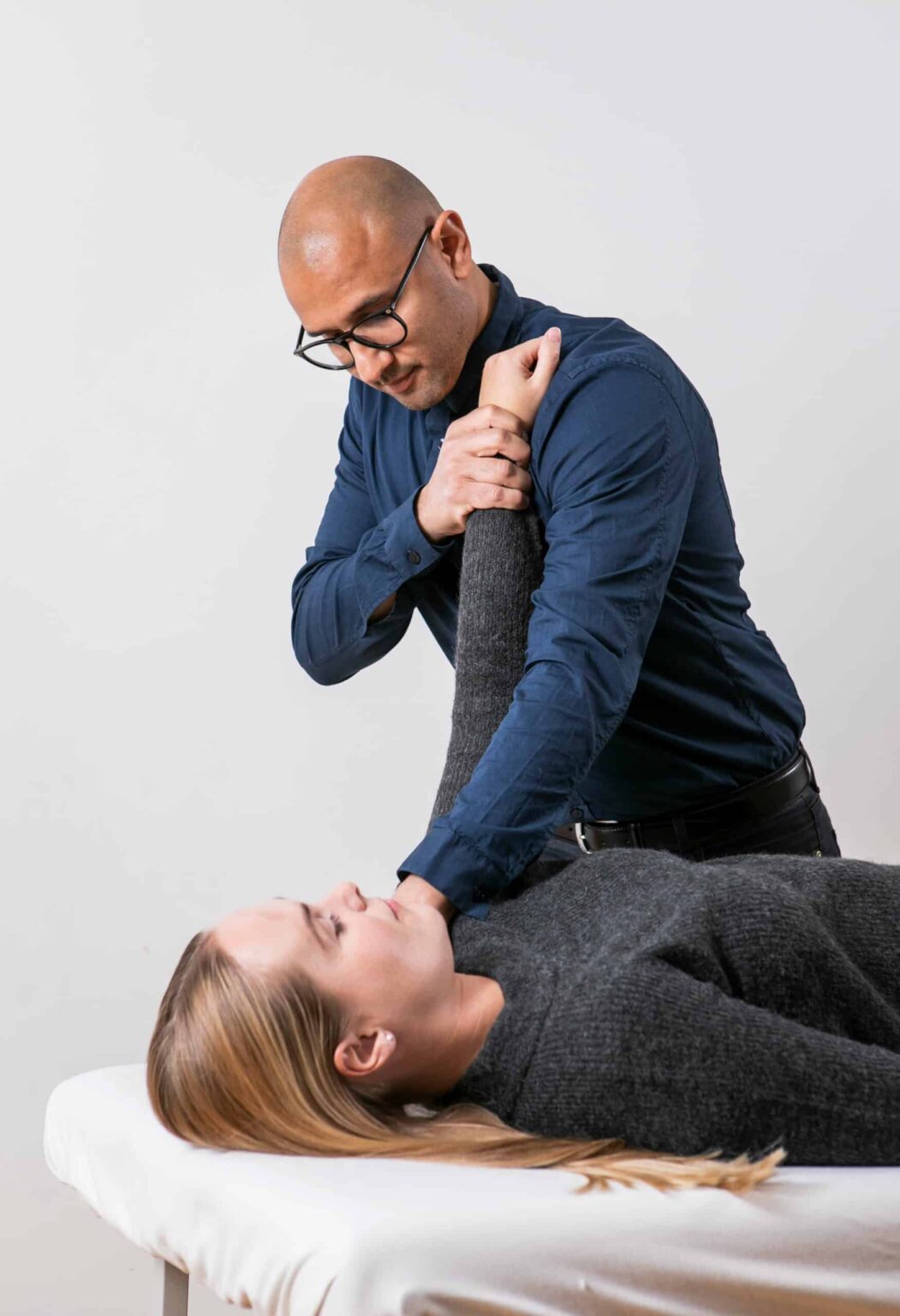
Carpal tunnel syndrome

Tenosynovitis
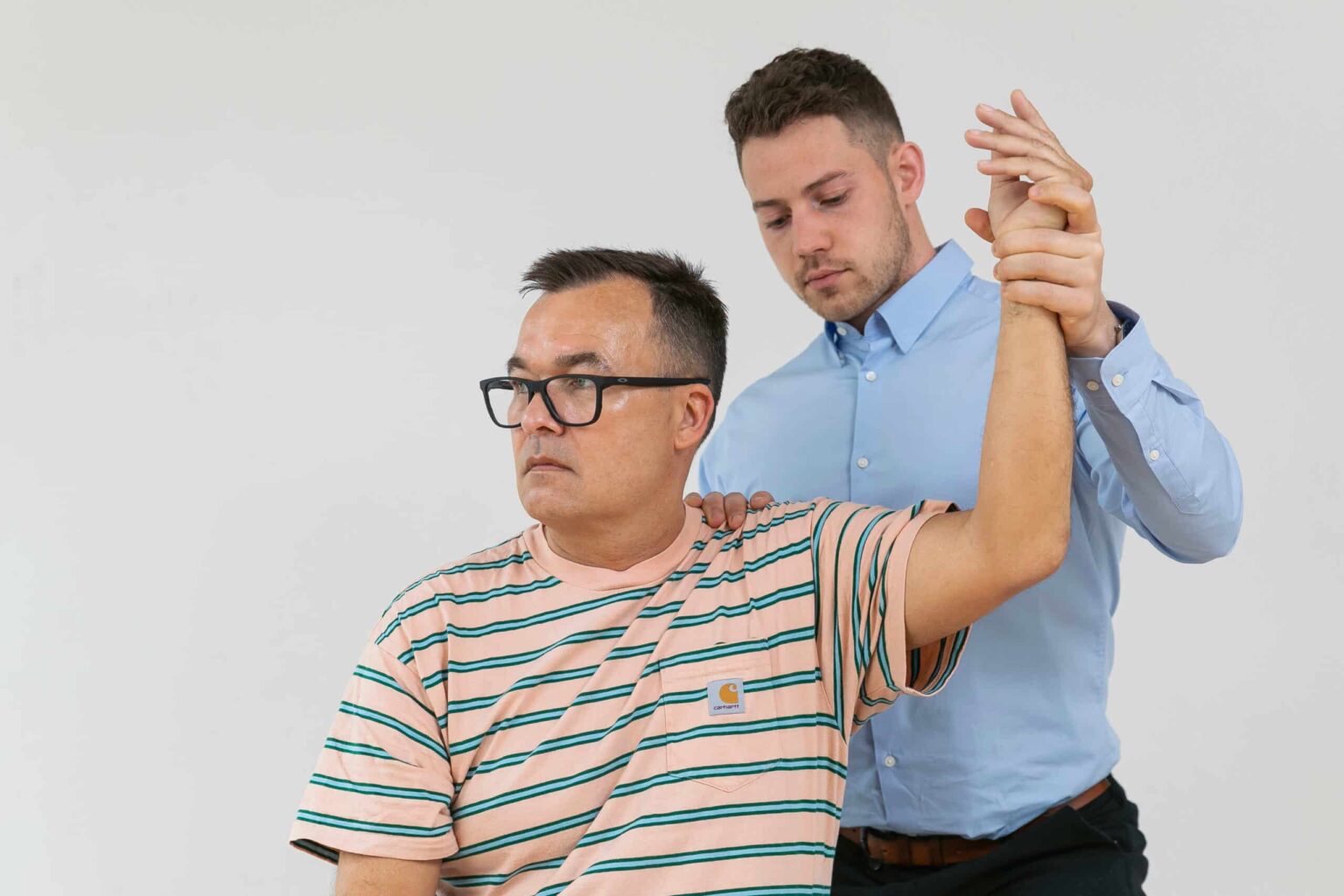
Golfer’s Elbow
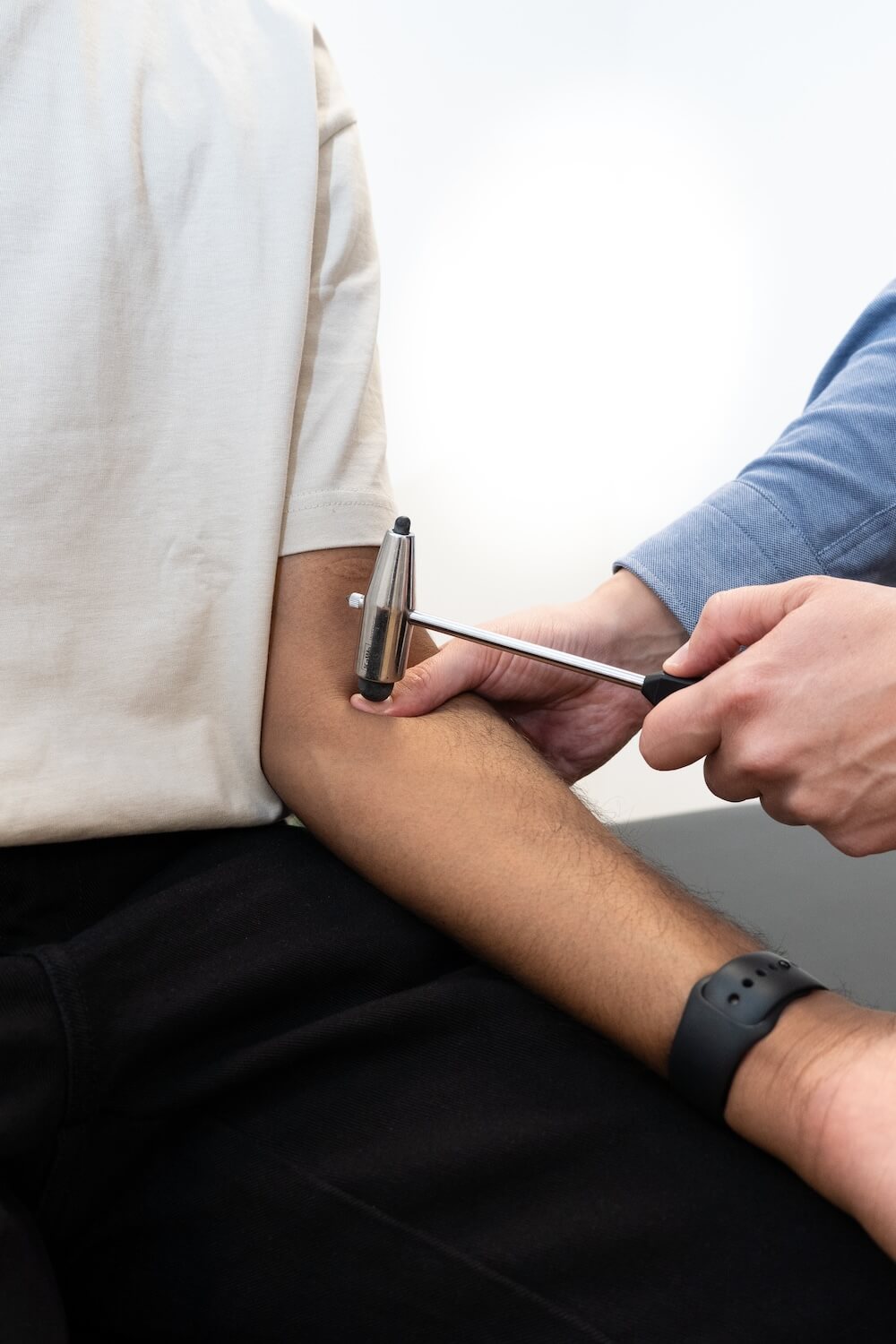
Tennis elbow

